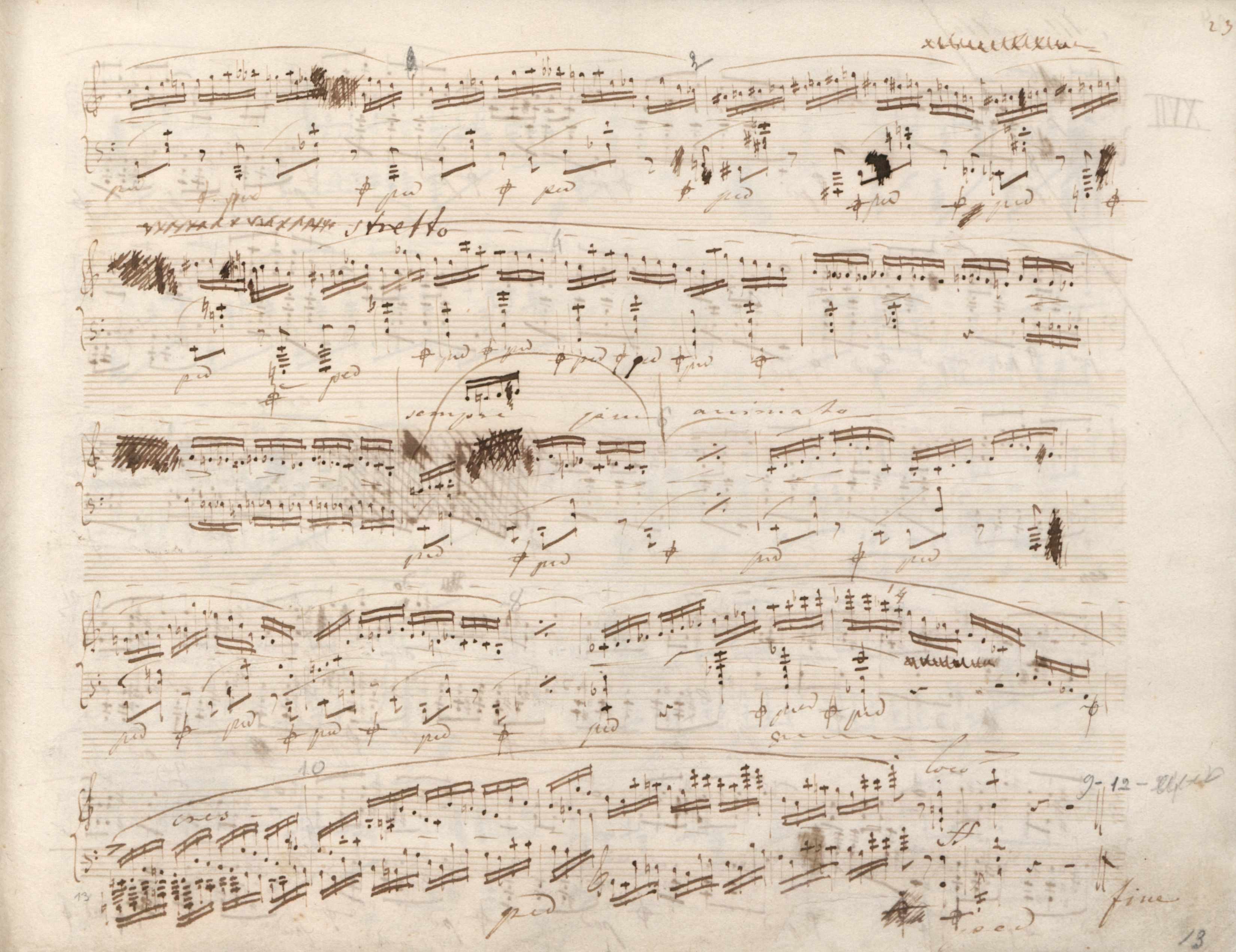



A
compare
It is unclear whether the  mark, placed in A between the 4th and the 5th quavers in the bar, was supposed to concern A
mark, placed in A between the 4th and the 5th quavers in the bar, was supposed to concern A or d
or d in Chopin's eyes. The arguments for A
in Chopin's eyes. The arguments for A are as follows:
are as follows:
- the resemblance to b. 26, in which
 is clearly under the 4th quaver. The preceding
is clearly under the 4th quaver. The preceding  asterisk having been placed before the 4th quaver seems to confirm that the intention was that both bars should be provided with analogous pedalling markings;
asterisk having been placed before the 4th quaver seems to confirm that the intention was that both bars should be provided with analogous pedalling markings;
The arguments for d :
:
- the situation in the discussed place and the one between the bars being graphically similar – the 'd' letter in the
 mark written under the 5th quaver in b. 27 and under the 1st quaver in b. 28, respectively, as well as a similar space between
mark written under the 5th quaver in b. 27 and under the 1st quaver in b. 28, respectively, as well as a similar space between  and
and  in both places;
in both places; - lack of full harmonic analogy between b. 26 and 27 – in the former, the bass note is constantly A
 , whereas in the latter, the d
, whereas in the latter, the d note appearing in the middle of the bar suggests that the bass note should be changed and a D
note appearing in the middle of the bar suggests that the bass note should be changed and a D minor chord in root position, which tonally closes the entire four-bar section starting from b. 24. For such a harmonic sequence to be audible, one cannot press the pedal on the 4th quaver, which keeps A
minor chord in root position, which tonally closes the entire four-bar section starting from b. 24. For such a harmonic sequence to be audible, one cannot press the pedal on the 4th quaver, which keeps A as the bass note.
as the bass note.
Compare the passage in the sources »
category imprint: Graphic ambiguousness
issues: Inaccuracies in A
notation: Pedalling

